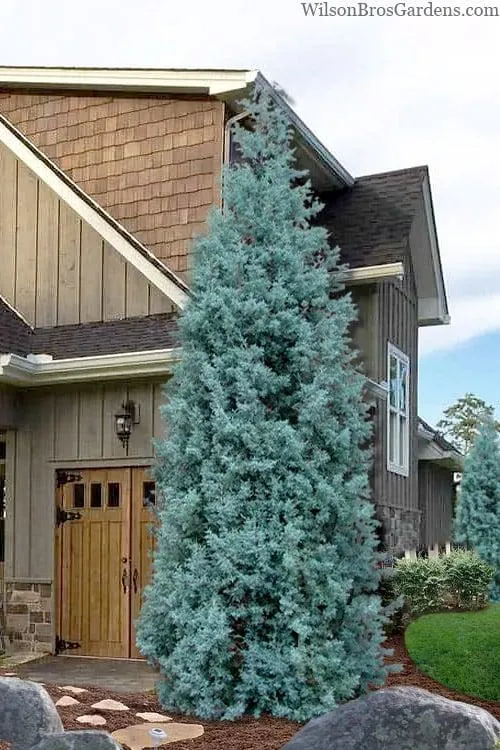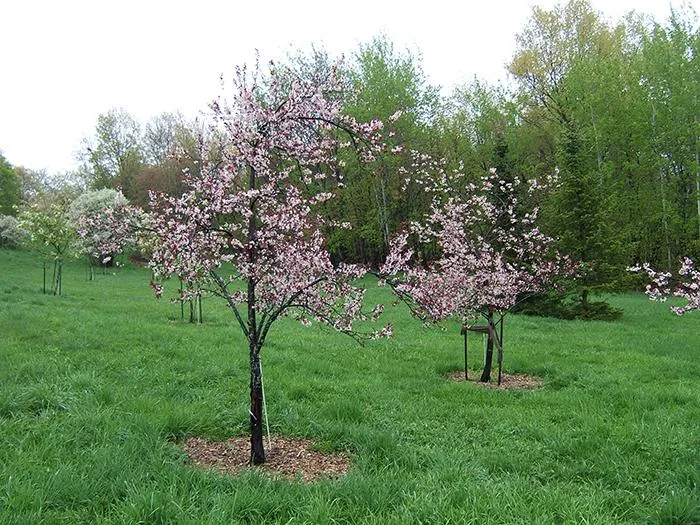The Best Fast-Growing Indoor Tree Options and Tips for Care
If you’re looking for a living plant to add some visual interest and natural beauty to your indoor space but don’t want to wait years for it to grow, fast-growing indoor trees may be the answer. While not all trees thrive in the confined conditions of indoor living, there are several varieties that can provide big impact in a small amount of time. In this article, I’ll discuss some of the top choices for fast-growing indoor trees as well as tips for providing them with proper care so they flourish quickly.
Top Fast-Growing Indoor Tree Varieties
Here are some of the best indoor tree varieties known for their rapid growth:
- Bamboo Palms: Often called bamboo or reed palms, these trees have tall, slender stems that can add up to a foot in height each year. With their clumping growth habit, they produce a tropical look without taking over the whole room. Two popular varieties are Chamaedorea seifrizii and Chamaedorea elegans.
- Weeping Fig: With its cascading form and heart-shaped leaves, Ficus benjamina ‘Exotica’ is a showstopper. Give it ample sunlight and it may grow 12-18 inches per year, getting wider at the same time. Its fast growth rate makes it a top choice for offices and homes.
- Chinese Evergreen: Aglaonema species like A. modestum and A. commutatum thrive in low-light conditions and can increase in size by several feet annually with the right care. Their colorful foliage in shades of green, pink, and cream adds a stylish pop to any room.
- Money Tree: Also called Pachira aquatica, this braided trunk tree tolerates lower light and may gain a foot or more in height each season. Just prune branches back if it outgrows the space.
Those are some of the best options if you want an indoor tree that puts on noticeable growth within a year. With diligent care, you may achieve even faster growth rates than average.
Tips for Maximizing Growth
Now that you know the star performers, here are some additional tips to help your fast-growing indoor tree reach its full potential:

- Provide bright, indirect sunlight for at least 6 hours daily if possible. Southern or eastern exposures near windows work well. Use grow lights for lower-light areas.
- Water when the top inch of soil is dry. Water logging is the main killer – aim for moist but not soggy soil.
- Fertilize every 4-6 weeks during the growing season with a balanced houseplant food. Follow label directions carefully for safety.
- Repot up one size in the spring when roots start to burst out drainage holes. Use a soil made for houseplants or add perlite to indoor potting mixes for drainage.
- Prune off dead or diseased parts and shape the plant as needed to encourage bushy, full growth. This stimulates new growth.
- Raise the humidity around the tree using a pebble tray, humidifier, or by grouping with other plants.
The right care will give your tree the nutrients and growing conditions it needs to achieve its fast growth potential. Now you can get that jungle feel indoors without the long wait!
Dealing with Common Issues
No matter how well you care for your tree, a few pests or problems could crop up. Here are some basics on handling typical indoor tree issues:
- Yellowing or browning leaves: This usually means too much or too little water. Check moisture levels and adjust watering accordingly.
- Scale or mealybugs: Isolate the plant and wipe pests off with isopropyl alcohol on a cotton ball. Apply systemic insecticide per label if needed.
- Fungus in soil: Remove damaged parts, improve air circulation and drainage, and water less frequently to prevent recurrence.
- Leggy growth: Prune tree back or move it to a sunnier spot. It’s not getting enough light for compact growth.
- Browned leaf tips: Indicative of hard water. Filter or use rain water and cut any damaged parts as needed.
With some trial and error troubleshooting, you’ll learn to recognize and remedy common indoor tree woes. Don’t get stressed – these plants are pretty resilient!
Maintenance and Care Tips Over Time
While fast growth is achievable the first year or two, your tree may slow down eventually as it matures. Here are some long-term care best practices to keep it looking its best:

- Continue regular watering, feeding, and pruning as needed based on conditions.
- Repot up one pot size every 2-3 years to keep roots happy in fresh soil.
- Rotate the plant regularly for even growth if light is limited on one side.
- Use pruning or trimming to maintain the ideal shape as it gets larger.
- Enjoy your fast-growing tree for years to come with minimal upkeep!
With diligent care indoors, many trees can live 10 years or longer providing natural beauty. I hope these tips help you choose and care for a fast-growing indoor tree to brighten your space for seasons to come.
Let me know if you have any other questions! I’d be happy to offer additional advice to help your tree thrive quickly.
Top Indoor Trees for Quick Growth
| Tree | Growth Rate | Light Needs | Water Needs | Care Tips |
|---|---|---|---|---|
| Peace Lily | Fast | Low to Medium | Allow soil to dry slightly between watering | Place in bright, indirect light. Tolerates low light. |
| Chinese Evergreen | Moderate-Fast | Medium | Water when top inch of soil is dry. | Keep soil evenly moist. High humidity appreciated. |
| Ponytail Palm | Moderate | Low-Medium | Allow soil to dry out between watering. | Tolerates low light. Water infrequently in winter. |
| Bamboo Palm | Fast | Medium-Bright | Water when top inch of soil is dry. | High humidity appreciated. Fertilize monthly in spring-fall. |
| Spider Plant | Moderate-Fast | Low-Medium | Allow soil to dry slightly between watering. | Tolerates low humidity and neglect. Propagate from plantlets. |
FAQ
-
What types of indoor trees grow fast?
Bamboo, ficus, and palm trees tend to grow fairly quickly indoors. Some varieties can even gain a foot or more per year under the right conditions.
-
How do I care for a fast-growing indoor tree?
To keep a speedy indoor tree healthy, make sure it gets lots of sunlight and keep the soil continually moist. Also, check often for new growth that may need trimming to maintain the desired shape. Perhaps repot into a larger container periodically as the roots spread.

-
Will a fast grower get too big for my house?
On the one hand, some types can certainly outgrow a living space in just a few years if not trimmed and trained. Nevertheless, even rapid growers like fiddle-leaf fig may stay compact with regular pruning and repotting. so size is controllable with vigilance.
-
Are all fast-growing trees good for indoors?
No, not basically. While speedy growth is appealing, a few varieties can become ungainly or a hassle indoors. Kind of like bamboo – it multiplies wicked quick but may take over if you’re not real careful. Palms, ficus, and monsteras are more manageably fast most of the time, in my view.
-
What’s the fastest tree I could grow from seed indoors?
Bamboo by far, I reckon. From seed to true leaves might take a month tops for some species. But is bamboo the best choice for your living space? The quicker they grow, the more you’ll have to do some major pruning to control it later on maybe. Something less vigorous and speedy could prove less of a bother in the long run.
-
Could anything go wrong with a speedy indoor tree?
While fast growth may seem awesome, it potentially comes with some issues. For one, a real speed demon tree may suck up too many resources from the soil too quickly. That can potentially lead to deficiency problems down the road if not properly fertilized. Pests are also more apt to take hold on a vigorously developing plant versus a slower one. So keep an eye out for any signs of trouble as the tree expands rapidly.

